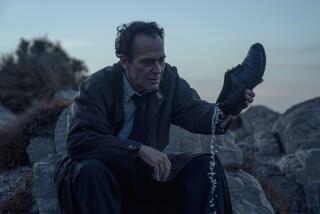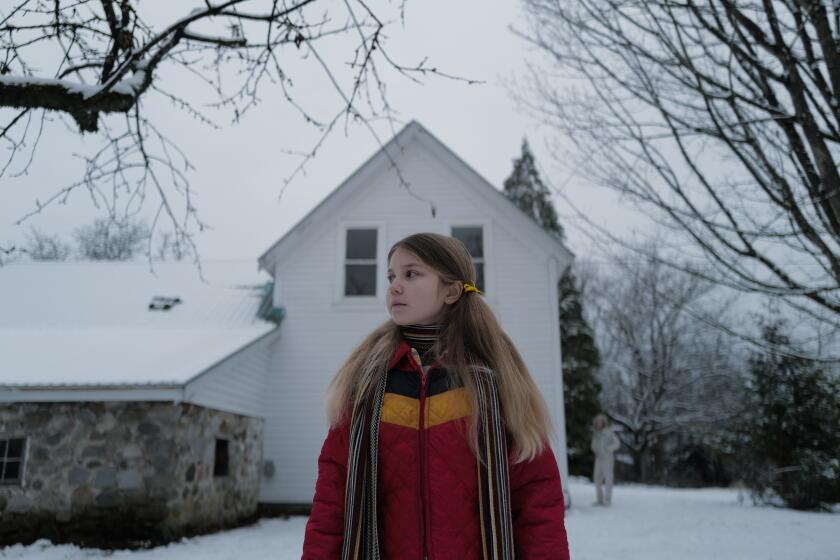A clearer view of overwhelming India and of Satyajit Ray
I once visited Monument Valley and tried to imagine myself in a John Ford western. It didn’t work. I did the “Vertigo” tour in San Francisco and felt nothing. No matter how rooted in a specific time or place, most movies, especially the great ones, are essentially fantasias. If we should find ourselves checking out their actual locations, the effect can be deadening. Instead of being fellow spirits, we are merely tourists.
These thoughts were in my mind when I traveled to Kolkata five years ago to discuss the legacy of the great Indian director Satyajit Ray as part of a cultural envoy program sponsored by the State Department. Would I feel like I was a player in one of his vast epics? How much of my love for his movies would turn out to be a love for India itself?
I arrived late at night and turned on CNN in time to hear that Barack Obama had just won the presidency. As dawn broke, I saw a street celebration that looked like a Hindi-style Mardi Gras. It was my introduction to that heartbreaking sprawl of 13 million people that has, with equal justice, been called the City of Dreadful Night and the City of Joy.
Along with Joe Lindner, who had been methodically restoring Ray’s films for the Motion Picture Academy, I was in Kolkata (formerly Calcutta) for two weeks as a lecturer and observer at its annual film festival and at various local colleges. It was my first time in India. As part of the program’s mission to bridge cultures, I screened newly struck prints of some of the Hollywood films that, according to Ray’s writings, shaped him.
Would you believe “A Night at the Opera”?
This entire experience came flooding back to me on the occasion of the wonderful series of academy-restored Ray films finishing Oct. 21 at Santa Monica’s Aero Theatre. Ray, who lived and died in Kolkata and is one of its most revered sons, is for me the greatest and the most haunting of all film artists.
At his finest, his movies seem to encompass everything there is in life. No one could capture the lives of women, of children, of the workaday world with such simple gravity, such emollience. He was the most sensual of directors and yet he had the most plangent comprehension of the human comedy. He was more than a humanist: What lights his movies from within is the belief that human beings are sacred.
Two of his greatest are ahead at the Aero: “The Apu Trilogy” on Oct. 6, and on Oct. 10 the three-part “Three Daughters,” the first of which, “The Postmaster,” is as beautiful as anything by Chaplin, Ray’s idol.
PHOTOS: Celebrities by The Times
Ray called Kolkata “this monstrous, teeming, bewildering city,” and I soon realized it was folly to attempt to see it through his films, his eyes. Kolkata, which makes the 405 Freeway at rush hour look like a lonely stretch of prairie, is far too overwhelming for that. As a Westerner, I was besieged by beggars everywhere. Their faces were both beseeching and accusatory.
A young mother — she looked alternately 18 and 80 — followed me for blocks until I broke down and bought her infant formula. I had entree to Mother Teresa’s hospice, where the dying were laid out on worn mattresses in the hushed semidarkness. I saw funeral pyres of bodies, fingers and toes exposed, charred to ash and ritually scattered in the Hugli river.
There was also a trendy restaurant called Oh Calcutta!, the Oxford bookshop on impassable Park Street, where I picked up thick volumes of Ray’s detective and children’s fiction (some of which he adapted to the movies), and Music World, where I hoarded so many hard-to-find Ray DVDs and raga CDs that I ended up buying an extra suitcase.
Wealth and poverty in Kolkata coexist within the same glance. The home of the Nobel Prize-winning poet Rabindranath Tagore, who founded the rural art school Ray attended for a time as a youth (and whose works he later filmed so transcendently), is a kind of shrine. But its back windows open directly onto a vast garbage dump. Rickshaw drivers hover before the entryway of the Royal Calcutta Turf Club, where its moneyed Indian members carry out a kind of inadvertant parody of Raj privilege.
I was sensitive about my Westerner status in this post-colonialist maelstrom, no more so than when I began lecturing to audiences about their famous native son. I imagined them thinking, “Who is this presumptuous sahib?”
The reality was different. Everywhere I went, I was greeted as a welcome dignitary. Professors gifted me with hard-to-find books on Indian cinema. Students snapped to attention when I entered the classrooms. I felt like a rear admiral.
But here was a shock: Relatively few asked about Ray or knew much about his movies. Apparently for the younger generation he was a figurehead rather than a vibrant presence. What they did know about, intimately, was the Bollywood galaxy.
I had been under the impression that the Bollywood movies (which Ray railed against) were predominantly the province of the less-educated masses. This impression was reinforced when I slipped into a rundown theater playing a musical and watched, on a very hard seat, about two hours of a four-hour epic while surrounded by what appeared to be four gabby generations of families settling in for the long haul. I told my chambermaid about the experience, and she couldn’t wait to tell me how the film ended.
Wherever I traveled I saw sky-high posters of the Bollywood stars and their latest extravaganzas, which often resembled madcap mash-ups of some new-style Ramayana and Busby Berkeley. These stars are demi-gods in a way that dwarfs their Hollywood counterparts. Globally, Salman Khan has it all over Brad Pitt.
The lack of a large audience for Ray’s films in his own country, even within West Bengal, should not have surprised me, since it was only his acceptance in the West, small though it was, that enabled him to continue working at all, right up to his death in 1992. And because, especially in “The Apu Trilogy” and many of the other early films, he did not make movies that the Indian authorities deemed suitably exportable (i.e. sunny), he was labeled a troublemaker. (The far left had a problem with Ray for ostensibly not being troublemaker enough).
When Ray, close to death in his hospital bed, received an honorary Academy Award in 1992 on live television, he was characteristically gracious, even courtly. (The academy’s discovery of the shockingly bad print conditions of his films led to their restoration project, which has rehabilitated 18 of his 28 features). He told about writing a fan letter as a young man to Billy Wilder. In “My Years With Apu,” Ray talks about his infatuation as a college student with Astaire and Rogers and Deanna Durbin, with Dietrich and Gary Cooper and Cary Grant; this eventually gave way to a reverence for Lubitsch, Ford, Capra, Welles and Wyler.
And yet Ray’s own movies would seem to have almost nothing in common with almost all of his favorite Hollywood films I screened in Kolkata. Besides “A Night at the Opera,” they included “The Maltese Falcon,” “Trouble in Paradise” and “Double Indemnity.” Might these movies have functioned as an alternate universe for Ray in much the same way that Bollywood does for his modern-day college counterparts?
Stylistically, they must certainly have represented an alternate universe for him — one from which he would need to break away to realize his indigenous art. He had to shake Hollywood out of his system. “What we need,” he wrote in 1947, before he ever directed a film, “is a style, an idiom, a part of the iconography of cinema which would be uniquely and recognizably Indian.” This he achieved, and yet, like all great artists, he is sui generis. To see his movies as a branch of ethnography is to void his essence entirely.
In Ray’s films, and in the popular imagination in general, the city is a symbol of modernity. But in the films he made in contemporary Kolkata (“The Big City” and “The Adversary” are the finest), the old and the new are inextricably joined. This is the great theme of all his movies: the way the past in India forever bleeds through the present.
This doubleness was everywhere I looked in Kolkata — in the streets, the temples, the hovels — but most of all it was in the faces. About the casting for his films, Ray once said: “You are looking for flesh and blood incarnations of the characters you are in the process of writing.” I expected my trip would bring me closer to Ray’s movies, and it did, but in ways ultimately more mysterious than I imagined. As it came time to leave, I felt an infinite tenderness for the faces I looked into, the ancient, aghast, supernal faces that I recognized from Ray’s films — faces that brought you back through time.
Rainer, film critic for the Christian Science Monitor, is the author of “Rainer on Film: Thirty Years of Film Writing in a Turbulent and Transformative Era.”
More to Read
Only good movies
Get the Indie Focus newsletter, Mark Olsen's weekly guide to the world of cinema.
You may occasionally receive promotional content from the Los Angeles Times.










